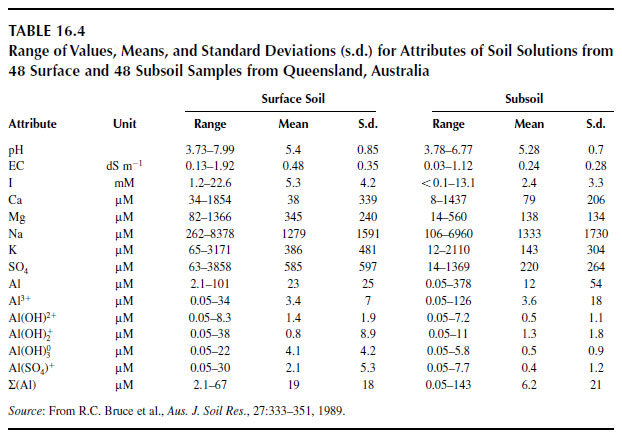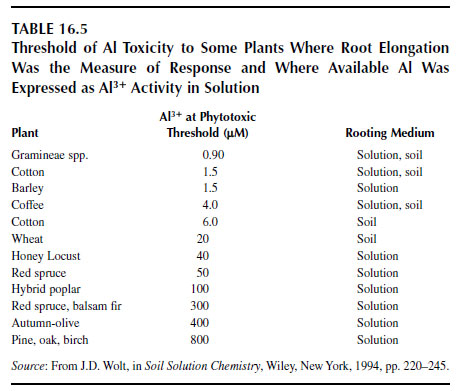Soil Analysis
Aluminum bioavailability in soils and toxicity to plants is difficult to quantify because toxic levels vary with species and even with cultivars within a species (82). For example, 1.5 µM Al3+ activity was reportedly toxic to cotton roots (294), and 4.0 µM Al3+ was toxic for coffee (32). For rice, an aluminum-tolerant crop, the critical Al3+ activity was approximately 100 µM (400).Chemical composition of some soil solutions, including aluminum and its various species, is listed in Table 16.4 (294). Table 16.5 lists critical Al3+ activities, as measured by root elongation, for selected plants (401). In general, trees are more tolerant of aluminum than most agronomic crops (Table 16.5). For 2-year-old seedlings of Norway spruce, aluminum toxicity was not evident when Al3+ activities in soil solutions ranged from 7.7 to 64.3 µM (402).
Instead of using Al3+ activity as the sole indicator of phytotoxicity, Alva et al. (34) used the sum of the activities of monomeric aluminum species (Al3+ + AlOH2+ + Al(OH) 2+ + Al(OH)30 + AlSO4+). They observed 50% reductions in root elongation, relative to roots of plants not receiving any aluminum, as this sum ranged from 12 to 17 µM for soybean,<8 to 16 µM for sunflower (Helianthus annuus L.), <7 to 15 µM for subterranean clover, and <5 to 10 µM for alfalfa. Alternatively, Cronan and Grigal (390) proposed the use of calcium/aluminum ratios as indicators of aluminum stress in forest ecosystems.
 |
 |




